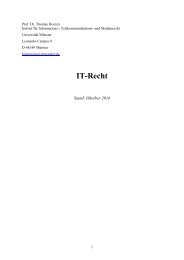3d4yVkKMl
3d4yVkKMl
3d4yVkKMl
Create successful ePaper yourself
Turn your PDF publications into a flip-book with our unique Google optimized e-Paper software.
- 50 -<br />
of mature female whales. The relevant table from the Research Plan, which appears as Table 2 to<br />
Appendix 6 (“Sample sizes of Antarctic minke, humpback and fin whales required for statistical<br />
examination of yearly trend in biological parameters”) to that document, is reproduced below. The<br />
far-left column shows that the JARPA II researchers considered using either a six-year or a 12-year<br />
research period and the second column shows that they considered using either of two estimates of<br />
the “initial rate” (i.e., whether the proportion of pregnant minke whales in the population of mature<br />
female whales at the start of the research was 80 or 90 per cent). The researchers then calculated<br />
how many whales would be required depending on the research period and the estimated “initial<br />
rate” to detect different rates of change in the proportion of pregnant minke whales (shown in<br />
percentages in the top row of the chart). The table is set forth below:<br />
Research<br />
period<br />
6 years<br />
12 years<br />
Table 2. Total sample size of Antarctic minke whales required for statistical<br />
examination of yearly trend [in the proportion of pregnant minke<br />
whales in the population of mature female whales]<br />
Initial<br />
rate (%)<br />
Rate of change<br />
+1% -1% +1.5% -1.5% +2% -2% +2.5% -2.5% +3% -3%<br />
80% 2022 2544 984 1089 618 591 462 369 402 249<br />
90% 912 1617 609 663 - 348 - 210 - 138<br />
80% 189 312 129 132 - 72 - 45 - 30<br />
90% - 213 - 87 - 45 - 27 - 18<br />
(Source: Counter-Memorial of Japan, Vol. IV, Ann. 150, App. 6.)<br />
166. This table illustrates how the selection of a particular value for each variable affects the<br />
sample size. For example, the decision to use a particular research period has a pronounced effect<br />
on the sample size. In order to detect a rate of change of minus 1.5 per cent and assuming an initial<br />
rate of 90 per cent (which were the criteria ultimately chosen by JARPA II researchers), a<br />
six-year period requires an annual sample size of 663 whales while the 12-year period requires an<br />
annual sample size of 87 whales. The table also illustrates that small differences in the rate of<br />
change to detect can have a considerable effect on sample size. For example, in order to detect a<br />
change of minus 1 per cent over a six-year period (assuming an initial rate of 90 per cent), the<br />
required yearly sample size is 1,617 whales. To detect a change of minus 2 per cent under the<br />
same circumstances, the required yearly sample size is 348 whales.<br />
167. The fourth step is the selection of a particular sample size for each research item from<br />
the range of sample sizes that have been calculated depending on these different underlying<br />
decisions relating to level of accuracy, rate of change and research period. With respect to the



